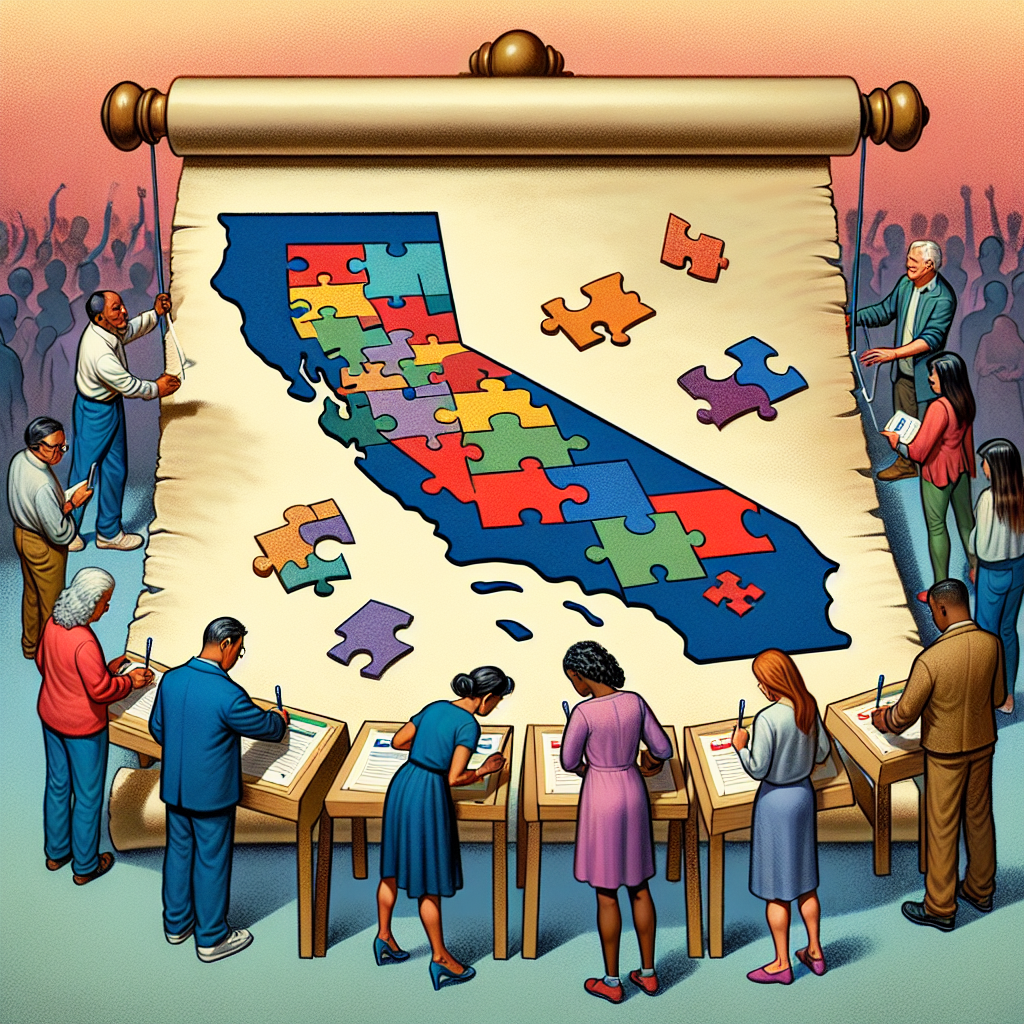On November 4th, California voters will go to the polls to participate in a referendum to decide whether to authorize the replacement of the current congressional district map in California with one that favors the Democratic Party. Typically, the district map is developed by an independent committee.
California Governor Gavin Newsom signed a bill on August 21st authorizing this referendum. Democrats say that the measure is aimed at “fighting fire with fire” in response to Texas’ Republican-favoring congressional redistricting plan, in preparation for next year’s midterm elections. The California legislature quickly passed the referendum bill at a special session convened by Newsom in response to Texas Governor Greg Abbott’s call for the Texas legislature to advance its redistricting plan.
Critics have condemned California’s move as unconstitutional, pointing out that a provision in state law has stripped the state legislature and governor of redistricting authority.
The politically neutral “California Citizens Redistricting Commission” drew up the current congressional district map after the 2020 census, which became effective in 2022. In 2008, California voters approved a constitutional amendment transferring redistricting authority to the independent committee. Currently, the California delegation in the U.S. House of Representatives holds 43 seats for Democrats and only 9 for Republicans.
According to a state constitutional amendment passed by the voters, the California legislature and governor no longer have the power to participate in redistricting. In this instance, in order to bypass the independent committee, voters are being asked to approve a new “temporary” district map with limited effectiveness. This referendum is known as “Proposition 50”, named in reference to the 50 states in the U.S.
If voters approve Proposition 50, the boundaries of 5 Republican congressional districts will be redrawn to include traditionally Democratic-leaning voters, increasing the chances for the Democratic Party to win seats.
The map changes will apply to the election cycles in 2026, 2028, and 2030.
After the 2030 census, the power to district maps will return to the California Citizens Redistricting Commission, and the new maps will be used in the elections starting in 2032.
Republicans are already a minority in “deep blue” California, and if the new district map is approved, Republicans could potentially lose up to 5 seats in the House of Representatives in the 2026 midterms.
Among them, the districts of California Republican congressmen Kevin Kiley, Doug LaMalfa, and Ken Calvert are particularly at risk. According to the new map, their districts will see an influx of voters who supported then-Vice President Kamala Harris in 2024.
Kiley’s seat appears most likely to be flipped under the revised map, and he has criticized the redistricting actions in California and Texas, proposing legislation to completely ban redistricting between the decennial censuses.
The reelection prospects for the other two Republican seats, currently held by Darrell Issa and David Valadao, will be more challenging under the new map. However, the Cook Political Report predicts that they could still remain in Republican hands.
The 2008 constitutional amendment has long had voter support, and Newsom and other California Democrats must actively campaign for Proposition 50 in order to push it through.
According to a poll conducted by Politico/Citrin Center/Possibility Lab from July 28th to August 12th, 64% of respondents support the independent committee, while only 36% support returning the power to the state legislature. The poll asked voters whether they “support maintaining the independent redistricting commission” or “support returning the authority to draw congressional districts to the state legislature”.
The survey also found that California Democratic voters seem to have reservations about Newsom’s referendum, with 61% still preferring the independent committee. However, when the respondents are influential in Democratic policy-making, such as Democratic lawmakers, local officials, think tank leaders, and union leaders, the results are evenly split, with half supporting the independent committee and half supporting the legislature.
Republicans and independent voters, on the other hand, show 66% and 72% support for the independent committee, respectively.
However, the poll did not ask voters whether they support the “temporary changes” under Proposition 50.
A recent poll by UC Berkeley IGS shows a more optimistic scenario for the Democrats. The survey found that 48% of voters support the new map, 32% oppose it, and 20% are undecided.
Another national survey by Politico/Citron shows that 63% of Democrats support California’s redistricting actions, with 18% supporting the independent committee and 19% undecided.

